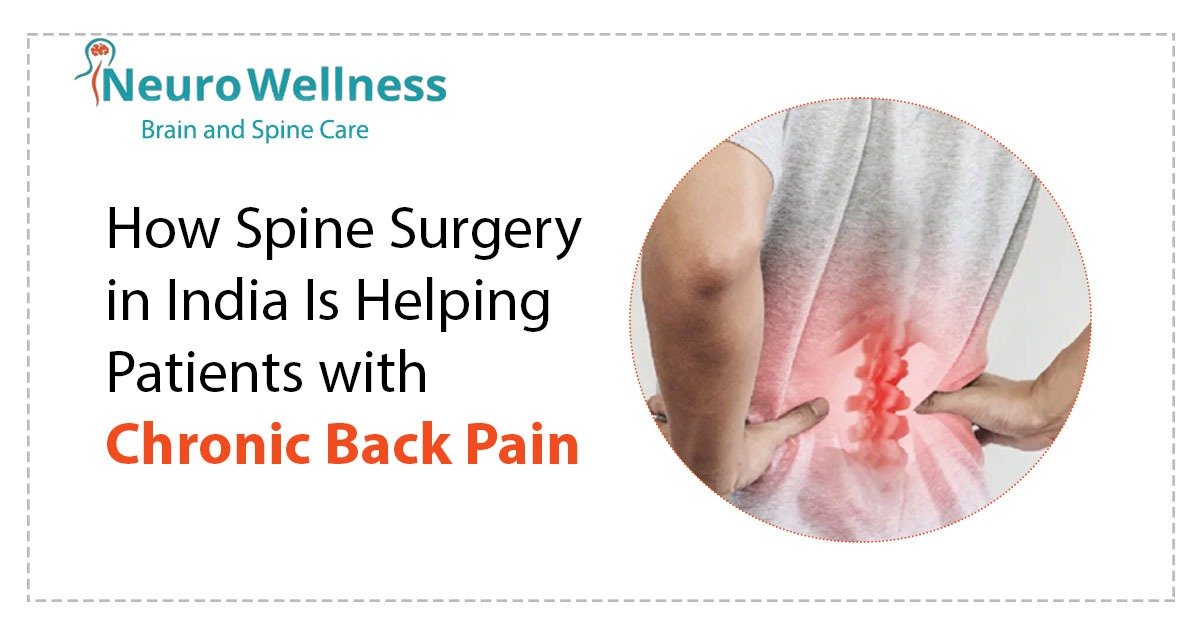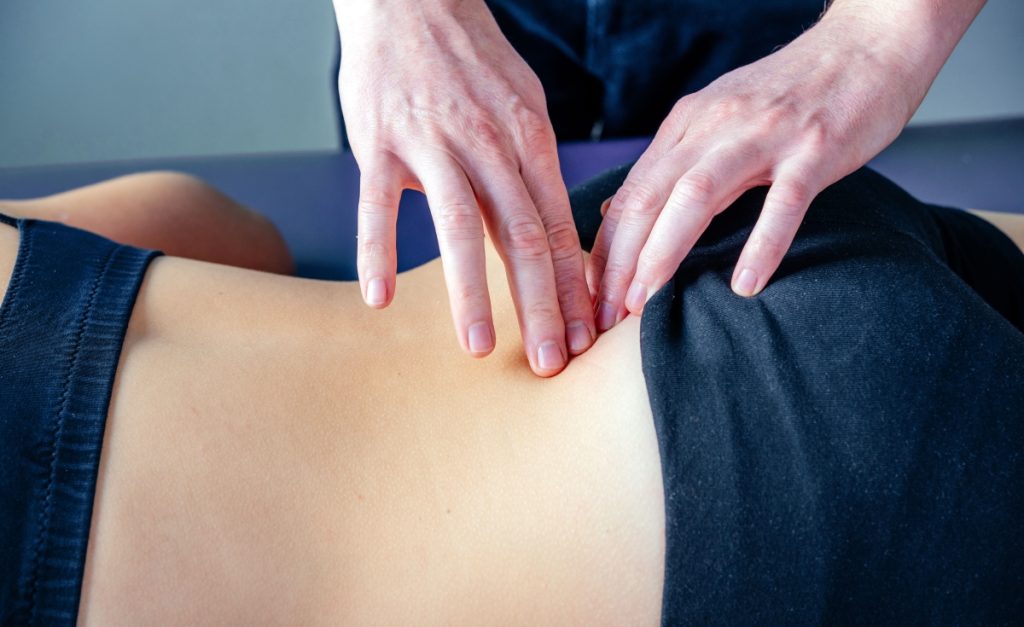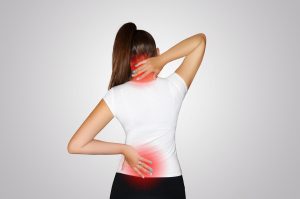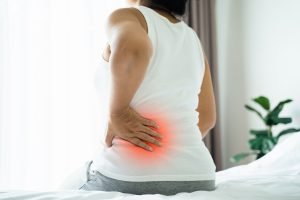Constant back pain can make everyday activities like bending, sitting, or walking unbearable, significantly affecting both your physical and emotional well-being. After trying various treatments without success, the idea of surgery might feel overwhelming due to concerns about cost, recovery, or effectiveness.
Thankfully, India was developing in spine surgery, offering advanced care and technology, and expert spine surgeons in Bangalore—all at an affordable cost. With a proven track record of success, India brings hope to patients worldwide, whether they require minimally invasive procedures or complex spinal repairs.
In this insightful blog, we explore how spine surgery in India is transforming the lives of patients with chronic back pain. Let’s dive in!
Common Causes of Chronic Back Pain
Degenerative Conditions
- Herniated Discs: Spinal nerves are put under strain when the cushion between vertebrae weakens or bulges, but this can cause extreme discomfort. X-rays, MRIs, and CT scans can all identify these disc problems.
- Spondylosis: Age-related tears in the spine can lead to arthritis, impacting flexibility and comfort.
Trauma or Injuries
- Accidents or falls can damage spinal discs or vertebrae, resulting in long-term pain and restricted movement.
- Sports-related injuries, especially in high-impact activities, are another frequent cause.
Lifestyle Factors
- Poor posture while sitting, standing, or working can strain the spinal cord and surrounding muscles.
- Obesity increases pressure on the lower back, worsening pain over time.
Read More : Disc Prolapse at Neck Cervical PIVD – NeuroWellness
Types of Spine Surgeries in India
The type of surgery recommended depends on the severity and nature of the back pain. Here’s a breakdown of the most common types:
Minimally Invasive Spine Surgery (MISS)
MISS is an innovative technique that has transformed the treatment of spinal disorders. It is suitable for various conditions, including spinal stenosis, herniated discs, and certain abnormal conditions due to injuries. MISS uses small incisions and specialized instruments to access the spine with minimal disruption to surrounding tissues.
Benefits:
- Reduced blood loss during surgery.
- Less pain and scarring compared to traditional open surgery.
- Shorter hospital stays and quicker recovery times.
- Lower risk of complications such as infections.
How a Brain and Spine Clinic Can Help With Chronic Back Pain
Spinal fusion:
Spinal fusion emerges as a stabilizing solution for conditions involving instability between vertebrae. Degenerative disc disease, in particular, can compromise the spine’s stability, leading to pain and reduced functionality. Spinal fusion is the most common type of spinal surgery. This procedure involves joining two or more vertebrae together using bone grafts or inserting synthetic materials. The fused vertebrae create a stable structure, reducing abnormal movement and, most crucially, alleviating pain. This surgery can also help manage the function in the affected area.
Artificial Disc Replacement
Artificial disc replacement is an innovative solution for patients with damaged intervertebral discs causing chronic pain and limited mobility. Spine Surgeons in Bangalore replace the damaged disc with a synthetic one made of metal, designed to manage the natural movement of the spine.
Benefits:
- Restores normal motion in the affected spinal segment.
- Reduces the risk of adjacent segment degeneration (common in spinal fusion).
- Provides long-term pain relief and improves quality of life.
Recovery is quicker compared to traditional procedures, and patients often experience significant improvements in mobility within weeks.
Microdiscectomy
Microdiscectomy is a minimally invasive procedure often recommended for patients suffering from herniated discs that compress spinal nerves, causing pain, numbness, or weakness.
Spine Surgeons in Bangalore use a microscope to remove small portions of the herniated disc pressing on the nerve roots during this procedure. This procedure are used to remove either ruptured or herniated discs.
Benefits:
- Minimally invasive, requiring only a small incision.
- Shorter hospital stay and faster recovery.
- High success rate in relieving nerve-related pain, especially sciatica.
Recovery: Patients can often resume normal activities within a few weeks, making this a popular choice for those seeking a quick return to daily life.
Advanced Technologies Used in Spine Surgeries
Robotic-Assisted Spine Surgery
- Robotic-assisted spine surgery leverages advanced robotic systems to enhance the precision of surgical procedures. Surgeons use robotic arms guided by preoperative imaging data, allowing them to create a highly accurate surgical plan.
- These systems minimize human error by providing unparalleled precision in placing screws, rods, or other spinal implants. For example, robotic guidance reduces the likelihood of nerve damage and improves alignment during complex spinal fusions. Patients benefit from smaller incisions, reduced blood loss, and a quicker return to daily activities.
- Robotic assistance also provides real-time feedback during surgery, enabling surgeons to make precise adjustments when necessary. This technology is especially valuable for procedures requiring high accuracy, such as correcting spinal deformities or addressing spinal instability.
3D Imaging and Navigation Systems:
- 3D imaging and navigation systems act as a “GPS” for surgeons, offering a detailed view of the spine during surgery. These systems combine preoperative CT or MRI scans with real-time intraoperative imaging, providing a dynamic 3D map of the patient’s anatomy.
- Surgeons can navigate complex structures with greater confidence, minimizing the risks associated with traditional 2D imaging methods. For instance, in procedures like spinal tumor removal, this technology ensures precision by showing the exact location of the tumor and critical surrounding tissues.
- Navigation systems also reduce radiation exposure compared to conventional X-rays, as fewer scans are needed during the surgery. For patients, this means a safer surgical experience with fewer complications and improved recovery outcomes.
Minimally Invasive Spine Surgery Techniques Using Robotics:
Minimally invasive spine surgery (MISS) techniques have been further revolutionized by the integration of robotic technology. These procedures involve tiny incisions and the use of specialized tools to address spinal issues with minimal disruption to surrounding tissues.
- Robotics enhances the accuracy and efficiency of these procedures. For example, robotic systems assist in guiding instruments through small incisions with extreme precision, reducing the risk of damage to muscles and ligaments. Common applications include treating herniated discs, spinal stenosis, or degenerative disc disease.
- The benefits of robotic-assisted MISS include shorter hospital stays, less postoperative pain, and a faster return to normal activities. Patients also experience fewer complications, such as infections or scarring, compared to traditional open surgeries.
These technological advancements not only ensure higher success rates but also make spine surgeries less intimidating for patients.
Conclusion:
Choosing a trusted hospital and spine surgeons in Bangalore will not only improve the procedure’s success but also make the entire treatment journey stress-free.
Chronic back pain can severely impact your quality of life, limiting your physical capabilities and affecting your emotional well-being. Advancements in spine surgery have provided effective solutions for even the most complex spinal conditions.
India is advancing in spine care and treatment, particularly for back pain treatment in Bangalore, with its advanced facilities and highly skilled doctors. From minimally invasive techniques to cutting-edge robotic-assisted surgeries, Neurowellness Brain and Spine Clinic provides care that is both innovative and patient-focused.
By understanding the available surgical options, leveraging advanced technologies, and ensuring proper aftercare, patients can achieve long-lasting relief and a renewed sense of mobility.
Take the first step today by consulting a qualified spine specialist for back pain treatment in Bangalore.
FAQs
1. What are the common causes of chronic back pain?
Chronic back pain can result from degenerative conditions like herniated discs or spondylosis, injuries from accidents or sports, and lifestyle factors such as poor posture or obesity.
2. What are the benefits of minimally invasive spine surgery (MISS)?
MISS offers reduced blood loss, less pain and scarring, shorter hospital stays, quicker recovery, and a lower risk of complications compared to traditional surgery.
3. How does robotic-assisted spine surgery improve outcomes?
Robotic systems enhance precision during surgery, reduce human error, minimize tissue damage, and ensure faster recovery with fewer complications.
4. What is artificial disc replacement, and who is it suitable for?
Artificial disc replacement involves replacing damaged intervertebral discs with synthetic ones to restore natural motion and alleviate pain. It’s ideal for patients with chronic disc-related issues.
5. How do I choose the best spine surgeon in Bangalore?
Look for a surgeon with expertise in advanced techniques, positive patient reviews, and access to state-of-the-art facilities to ensure a successful treatment journey.
6. How long does recovery take after spine surgery?
Recovery times vary depending on the procedure, but minimally invasive surgeries often allow patients to return to normal activities within a few weeks.





 Piriformis syndrome refers to pain that results from spasms in your piriformis muscle, a sizable muscle situated deep in your buttock. Pyriformis muscle is placed one on each side of waist. Due to hormonal and pregnancy-related changes in the pelvis, women are more affected than men.
Piriformis syndrome refers to pain that results from spasms in your piriformis muscle, a sizable muscle situated deep in your buttock. Pyriformis muscle is placed one on each side of waist. Due to hormonal and pregnancy-related changes in the pelvis, women are more affected than men.
 Women frequently develop osteoarthritis (wear-and-tear arthritis) of the facet joints. With an increase in age and/or weight, the risk increases.
Women frequently develop osteoarthritis (wear-and-tear arthritis) of the facet joints. With an increase in age and/or weight, the risk increases.

